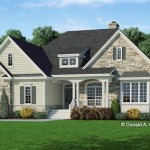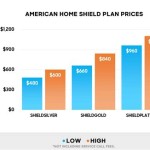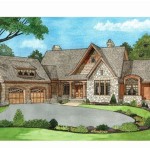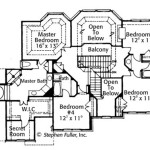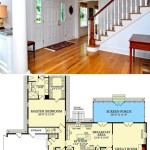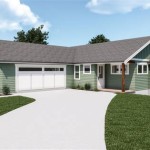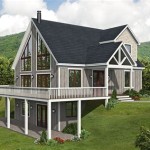Energy Efficient House Floor Plan
Energy efficiency has become a top priority for homeowners in today's world as energy costs continue to rise. An energy-efficient house floor plan can help reduce energy consumption without compromising comfort or style. Here are some essential elements to consider when designing an energy-efficient house floor plan:
Passive Solar Design
Passive solar design utilizes natural sunlight to heat and illuminate a home. This can be achieved by positioning windows and doors strategically to capture sunlight during the winter months and shading them during the summer. South-facing windows are ideal for maximizing solar gain, while overhangs or awnings can provide shade when necessary.
Open Floor Plan
Open floor plans allow for better air circulation and natural light penetration, reducing the need for artificial lighting and heating. By minimizing the use of interior walls and partitions, heat can move more freely throughout the home.
Energy Efficient Windows and Doors
Windows and doors are major sources of heat loss in a home. Energy-efficient windows and doors feature multiple panes of glass, low-emissivity (low-E) coatings, and insulated frames to minimize heat transfer and prevent drafts.
Insulation and Air Sealing
Adequate insulation in walls, ceilings, and floors helps prevent heat from escaping during the winter and entering during the summer. Air sealing measures, such as weatherstripping and caulking, minimize air leakage and drafts.
Energy-Efficient Appliances and Lighting
Energy-efficient appliances and lighting can significantly reduce energy consumption in a home. Look for Energy Star-rated appliances, such as refrigerators, dishwashers, and washing machines, which meet strict energy efficiency standards. LED lights are also highly efficient and can last for many years.
Zoning and Thermal Mass
Zoning refers to dividing the home into separate areas with different heating and cooling needs. For example, bedrooms and living spaces can be grouped together to maintain a comfortable temperature, while less frequently used areas can be kept cooler. Thermal mass, such as concrete or stone, can help absorb and release heat, stabilizing indoor temperatures.
Renewable Energy Systems
Incorporating renewable energy systems, such as solar panels or geothermal heating and cooling, can further reduce energy consumption and dependence on fossil fuels. Solar panels convert sunlight into electricity, while geothermal systems utilize the Earth's natural heat to heat and cool the home.
Additional Considerations
Other factors to consider when designing an energy-efficient house floor plan include:
* Orientation of the home on the lot * Use of natural ventilation * Efficient landscaping to provide shade and windbreaks * Regular maintenance and inspections to ensure energy-efficient systems are operating properlyBy incorporating these elements into your house floor plan, you can create a home that is comfortable, energy-efficient, and environmentally friendly.

Cool Energy Efficient Concrete House Plans Houseplans Blog Com

Simpson Green Homes

Energy Efficient House Design

Sustainable Building In 2024 Energy Efficient Kit Homes

Simpson Green Homes

Floor Plan Friday An Energy Efficient Home Katrina Chambers

Home Designs Fsec

Energy Efficient Home Design Plans Cad Pro

Energy Efficient House Plan 33002zr Architectural Designs Plans

Energy Efficient Home Things To Consider Perry Homes

